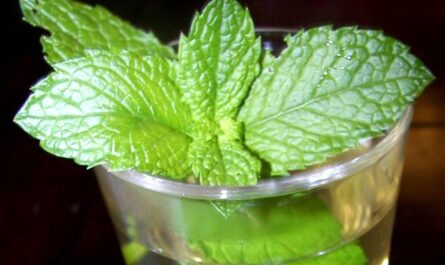What are some of Mate tea health benefits, nutrition, recipes, & side effects? Mate tea emerges as a nutritional powerhouse, brimming with antioxidants, vitamins, minerals, and caffeine that collectively contribute to its health-promoting properties. From bolstering immune function to enhancing mental clarity, this beloved beverage offers a myriad of benefits for both body and mind. Whether enjoyed hot or cold, mate tea stands as a testament to the nutritional richness found in nature’s bounty, providing a satisfying sip that nourishes and revitalizes. In this article, we will share some of Mate tea’s health benefits, nutrition, recipes, & side effects. Keep reading.
Nutritional Facts of Mate Tea
Mate tea, a traditional South American beverage, boasts a diverse array of nutritional components that contribute to its popularity and health benefits. This invigorating infusion is renowned for its rich blend of vitamins, minerals, and antioxidants, making it a favored choice among health-conscious individuals seeking a natural boost.
Exploring the Richness of Antioxidants in Mate Tea
One of the standout features of mate tea lies in its abundance of antioxidants, which play a crucial role in promoting overall health and well-being. These powerful compounds help combat oxidative stress within the body, shielding cells from damage caused by harmful free radicals. With its potent antioxidant properties, mate tea provides a robust defense against various chronic diseases and supports cellular rejuvenation.
Unveiling the Vitamin and Mineral Profile of Mate Tea
Beyond its antioxidant content, mate tea is also a notable source of essential vitamins and minerals vital for maintaining optimal health. Loaded with vitamins such as vitamin C, B vitamins, and vitamin A, as well as minerals like potassium, magnesium, and manganese, this beverage offers a holistic nutritional boost. These nutrients contribute to various bodily functions, including immune support, energy metabolism, and bone health, ensuring overall vitality.
Delving Into the Caffeine Content of Mate Tea
Mate tea stands out for its caffeine content, which provides a natural stimulant effect that can enhance alertness and mental focus. However, unlike other caffeinated beverages, mate tea delivers a smoother, more sustained energy boost without the jittery side effects often associated with excessive caffeine consumption. This makes it an appealing choice for those seeking a healthier alternative to conventional energy drinks or coffee.
Examining the Caloric Impact of Mate Tea
For individuals mindful of their caloric intake, mate tea presents a favorable option, as it is typically consumed without added sugars or calorie-laden additives. With minimal calories per serving, this beverage offers a guilt-free indulgence for those looking to maintain a balanced diet while still enjoying a flavorful beverage. Its low-calorie nature makes it a versatile choice that can be incorporated into various dietary preferences and weight management plans.
How much Mate tea to drink every day?
Mate tea, a traditional South American beverage, is gaining popularity worldwide due to its numerous health benefits and unique flavor profile. However, determining the ideal daily consumption of mate tea can be a subjective matter, influenced by various factors such as personal preferences, health considerations, and tolerance to caffeine.
Factors Influencing Daily Intake
When deciding on the appropriate amount of mate tea to consume daily, it’s essential to consider individual factors such as age, weight, overall health, and caffeine sensitivity. For instance, individuals who are more sensitive to caffeine may need to limit their intake to avoid negative side effects such as jitteriness or insomnia. Conversely, those with a higher tolerance may be able to consume larger quantities without experiencing adverse effects.
Recommended Guidelines and Limits
While there are no strict guidelines regarding the daily consumption of mate tea, experts generally recommend moderation to reap its benefits without overloading the body with caffeine. For most adults, consuming 1-3 cups of mate tea per day is considered safe and may provide a healthy dose of antioxidants, vitamins, and minerals. However, it’s essential to listen to your body and adjust your intake accordingly.
Monitoring Personal Response
Since individual responses to mate tea can vary, it’s crucial to pay attention to how your body reacts to different amounts. Start with a small serving and gradually increase the quantity while observing any changes in energy levels, digestion, or sleep patterns. This mindful approach allows you to find your optimal consumption level while avoiding potential discomfort or adverse reactions.
Consulting Health Professionals
If you have any underlying health conditions or concerns about caffeine intake, it’s advisable to consult with a healthcare professional before incorporating mate tea into your daily routine. They can provide personalized guidance based on your medical history and help you make informed decisions about consumption levels that align with your overall health goals.
What is the best time to drink Mate Tea?
While mate tea offers numerous health benefits and flavorful experiences, it’s essential to approach its consumption with moderation and mindfulness. By considering individual factors, monitoring personal responses, and seeking professional advice when needed, you can enjoy the delights of mate tea while maintaining a balanced and healthy lifestyle.
Health benefits of Mate Tea:
Here are some of the health benefits of Mate tea:
How to Make Mate Tea
Making mate tea is a cherished tradition in many South American countries, particularly in Argentina, Uruguay, and Paraguay. This invigorating beverage is enjoyed for its unique flavor and stimulating effects. Originating from the leaves of the yerba mate plant, mate tea offers a rich cultural experience with every sip. Let’s delve into the process of preparing this beloved drink, from gathering the ingredients to enjoying the final product.
Ingredients for Mate Tea
To make mate tea, you’ll need a few essential ingredients:
- Yerba Mate Leaves: The cornerstone of mate tea, yerba mate leaves provide the distinctive flavor and energizing properties. Look for high-quality, loose-leaf yerba mate for the best results.
- Hot Water: Purified or filtered water works best for brewing mate tea. The temperature should be around 160-180°F (70-80°C) to avoid scalding the delicate leaves.
- Optional Additions: While traditional mate tea requires only yerba mate and water, you can personalize your brew with optional additions such as sugar, honey, or lemon for flavor enhancement.
Proportions for Brewing Mate Tea
Achieving the perfect balance of yerba mate and water is crucial for a flavorful cup of tea. Here’s a general guideline for proportions:
- Yerba Mate: For a single serving, measure about two tablespoons of yerba mate leaves. Adjust the quantity according to your preference for strength.
- Hot Water: Pour approximately eight ounces (240 milliliters) of hot water over the yerba mate leaves. Again, feel free to adjust the amount to suit your taste preferences.
Steps to Make Mate Tea
Now, let’s walk through the steps to brew a delightful cup of mate tea:
- Prepare the Yerba Mate Gourd: If using a traditional mate gourd, start by filling it about two-thirds full with yerba mate leaves. Gently shake the gourd to settle the leaves and create a slight slope.
- Heat the Water: Bring the water to the appropriate temperature, just below boiling. Avoid boiling water, as it can scorch the yerba mate leaves and alter the flavor.
- Pour the Water: Carefully pour the hot water over the yerba mate leaves in the gourd. Fill the gourd to the brim, allowing the leaves to steep and release their flavor.
- Let it Steep: Allow the mate tea to steep for a few minutes, typically around 3-5 minutes, depending on your preference for strength. During this time, the leaves will infuse the water with their unique flavor.
- Enjoy Your Mate Tea: Once steeped, sip the mate tea directly from the gourd using a bombilla, a special metal straw with a filter at the bottom. Take small sips and enjoy the rich, complex flavor of mate tea. How AI, ChatGPT maximizes earnings of many people in minutes
Making mate tea is not just a simple brewing process; it’s a cultural experience that brings people together. With the right ingredients, proportions, and steps, you can create a delicious cup of mate tea to enjoy alone or with friends. So, gather your supplies, steep your leaves, and savor the warmth and energy of this beloved South American beverage.
Side Effects of Mate Tea
Other Interesting Articles
- 21 Health Benefits of Chai Green Tea: Recipe, Side Effects
- 22 Proven Health Benefits of Drinking Milk Daily At Night
- Hidden Disadvantages of Drinking Milk for Skin: 11 FAQs
- 22 Chai Tea Health Benefits, Recipe, Time, Side Effects
- 22 Milima Tea Health Benefits, Recipe, Time, Side Effects
- 22 Irish Breakfast Tea Health Benefits, Recipe, Side Effects
- 20 Rukeri Tea Health Benefits, Recipe, Time, Side Effects
- 19 Darjeeling Black Tea Health Benefits, Recipe, Side Effects
- 19 Panyang Congou Tea Health Benefits, Recipe, Side Effects
- Black Tea vs Milk Tea: 15 Benefits and 10 Side Effects
- 20 Side Effects of Drinking Ginger Tea in Empty Stomach
- 20 Silent Disadvantages of Drinking Milk with Turmeric
- 24 Benefits of Drinking Milk Everyday During Pregnancy
- 20 Hidden Disadvantages of Drinking Lemon Water Daily
- Black Tea vs Normal Tea: 15 Benefits and 10 Side Effects
- Best Time to Drink Milk: Seniors, Adults, Weight Loss, Muscle
- 21 Keemun Tea Health Benefits, Recipe, Time, Side Effects
- 10 Great Health Benefits of Drinking Hot Tea in the Morning
- 23 Lapsang Souchong Tea Health Benefits, Side Effects
- 21 Probable Disadvantages of Drinking Tea in Paper Cups




